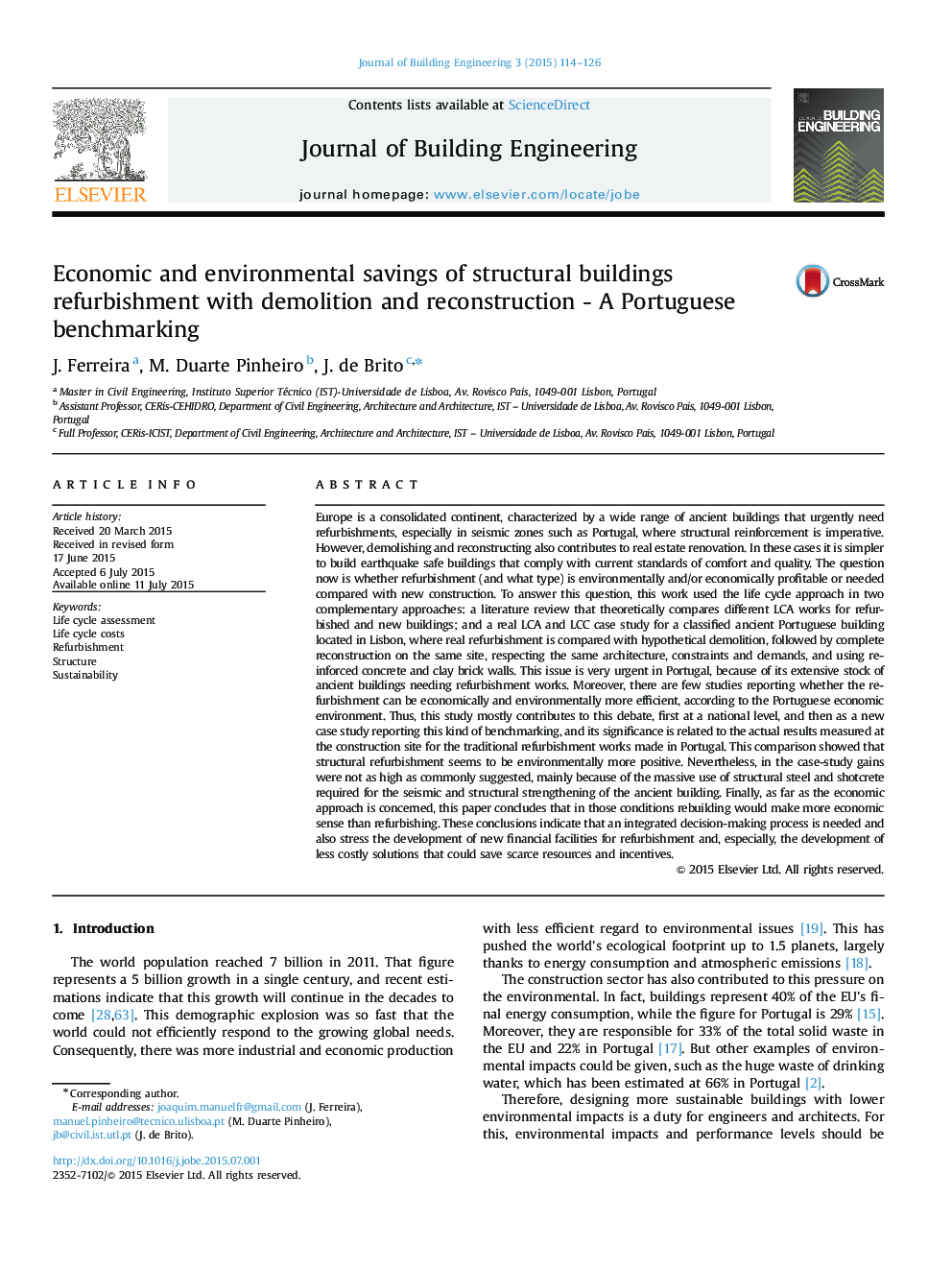| Article ID | Journal | Published Year | Pages | File Type |
|---|---|---|---|---|
| 283870 | Journal of Building Engineering | 2015 | 13 Pages |
•A LCA review of refurbished buildings is made to quantify their impacts.•A comparison of a real refurbished palace and its equivalent reconstruction is made.•It was found that environmentally the refurbished solution has the best performance.•It was concluded that the new equivalent solution has lower construction costs.
Europe is a consolidated continent, characterized by a wide range of ancient buildings that urgently need refurbishments, especially in seismic zones such as Portugal, where structural reinforcement is imperative. However, demolishing and reconstructing also contributes to real estate renovation. In these cases it is simpler to build earthquake safe buildings that comply with current standards of comfort and quality. The question now is whether refurbishment (and what type) is environmentally and/or economically profitable or needed compared with new construction. To answer this question, this work used the life cycle approach in two complementary approaches: a literature review that theoretically compares different LCA works for refurbished and new buildings; and a real LCA and LCC case study for a classified ancient Portuguese building located in Lisbon, where real refurbishment is compared with hypothetical demolition, followed by complete reconstruction on the same site, respecting the same architecture, constraints and demands, and using reinforced concrete and clay brick walls. This issue is very urgent in Portugal, because of its extensive stock of ancient buildings needing refurbishment works. Moreover, there are few studies reporting whether the refurbishment can be economically and environmentally more efficient, according to the Portuguese economic environment. Thus, this study mostly contributes to this debate, first at a national level, and then as a new case study reporting this kind of benchmarking, and its significance is related to the actual results measured at the construction site for the traditional refurbishment works made in Portugal. This comparison showed that structural refurbishment seems to be environmentally more positive. Nevertheless, in the case-study gains were not as high as commonly suggested, mainly because of the massive use of structural steel and shotcrete required for the seismic and structural strengthening of the ancient building. Finally, as far as the economic approach is concerned, this paper concludes that in those conditions rebuilding would make more economic sense than refurbishing. These conclusions indicate that an integrated decision-making process is needed and also stress the development of new financial facilities for refurbishment and, especially, the development of less costly solutions that could save scarce resources and incentives.
